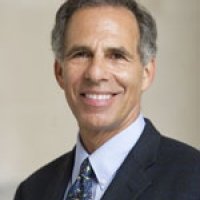The World at 7 Billion: Building a Sustainable Future
Population growth “is highly concentrated in what are today the poorest and least well-governed areas of the world,” said George Mason University professor Jack Goldstone at the Wilson Center on December 5.
Goldstone was joined by Suzanne Ehlers, president and CEO of Population Action International (PAI), and Matthew Erdman, population-health-environment technical advisor at USAID, to discuss the implications of seven billion people and counting for the environment as part of the joint Wilson Center-George Mason University Managing the Planet series.
Concentrated Growth
At a global level, Goldstone said, population growth doesn’t look very severe. Growth rates have declined precipitously over the last few decades, especially in western countries. “However,” he said, “that kind of complacency can be very, very dangerous because there are population trends buried in those aggregate figures that really deserve our attention.”
Despite declining fertility rates, world population is still projected to grow by about 30 percent by 2050, according to the UN. Part of that growth is explained by demographic momentum: since young people make up the biggest demographic cohort in history, population growth will continue even if individual young people choose to have fewer children. But there are also more than 222 million women around the world who lack access to voluntary family planning.
Much of the growth will be concentrated in a few regions: sub-Saharan Africa, South Asia, and parts of Latin America and the Middle East. To illustrate the magnitude of growth in Africa in particular, Goldstone took a closer look at the projections for Nigeria, Uganda, Niger, Tanzania, and Ethiopia. According to the UN’s medium variant projections, which assume reductions in total fertility and increases in contraceptive prevalence, the populations of each of these countries will still dramatically increase by 2050; in Niger and Tanzania, they will more than triple.
“But if we go out another half century, the numbers truly get prodigious,” Goldstone said. Nigeria’s population of 158 million today could reach 730 million by 2100, he pointed out. If fertility decreases more slowly, Nigeria’s population could swell to over a billion people by 2100, according to the UN’s high projection.
Goldstone also examined two other demographic trends that will shape the future of the planet: urbanization and the growing global middle class.
In 2010, the world population shifted from predominately rural to predominately urban for the first time in history. Urbanization is only projected to continue growing, said Goldstone. Overall global urban population will increase by about 75 percent by 2050, faster than the baseline global population growth of about 25 percent. This trend has consequences for the environment as urban populations can put a greater strain on natural resource, especially since most of the urban growth will take place in developing countries which may not have the capacity to support it.
Further, as more and more people leave poverty for the middle class – a trend that often goes hand-in-hand with moving to the city – they will consume more and more, further straining the world’s resource base. “Poverty is a tragedy,” said Goldstone, “however, overcoming poverty generally requires considerable increases in energy and material consumption,” which is bad news for the environment.
There is still time to avoid the negative consequences of these near-future global shifts. Goldstone suggested that encouraging and helping developing countries model their growing urban areas after more compact European cities, as opposed to the car-centered American suburbs, can help reduce their environmental impact. And empowering women to “gain greater control over their families and over their bodies” can help lower fertility and lead to more productive societies as more women enter the workforce.
Still, Goldstone was far from optimistic: “For the past 30 years in which I’ve been reading and talking and researching these topics, we have largely neglected to do anything about the consequences of rising consumption, rising urbanization, rising energy use with regard to climate change, and patterns of human residence and vulnerability.”
Linking Population with Conservation
Like Goldstone, Suzanne Ehlers broke the global projections down to regional levels. Specifically, she focused on areas of great biodiversity.
“Many places around the world that are the most ecologically diverse are also experiencing the most population pressure,” she said. “And the majority of global biodiverse hotspots, as the Conservation International group defines it, are located in developing countries. Population growth rates in these areas are higher than those of the world overall, and higher too than the average rate in developing countries – not by a huge margin, but by an important margin.”
She also built on Goldstone’s point about empowering women. Population is “absolutely opportunity and not destiny,” she said. There are pockets of great unmet demand for reproductive health services, andthese areas are invariably where population growth is highest and frequently also the most vulnerable to climate change.
PAI has a mapping effort which combines overlays of agricultural production, water scarcity, resilience, population, temperature, precipitation, soil moisture, unmet need for family planning, and biodiversity. These help show hotspots of vulnerability and also demonstrate that “people’s lives are interdisciplinary,” said Ehlers.
“Yet most funding mechanisms, from private foundations to government bilaterals, across the board, tend to work in silos according to sectors,” she continued. Population, health, and environment (PHE) projects are one set of interventions, though, that are helping to address these issues in an integrated fashion.
“PHE groups came about largely through demand conservation groups were seeing in the field,” Ehlers said. These groups “women and families wanted to participate in conservation efforts, but they also needed to have their health needs met, and they also needed to have their contraceptive needs met in order not only to have the family size that they wanted but in order to live in a sustainable way.”
Conservation groups found that combining health, livelihood, and environmental interventions improved the lives of both people and their environment.
Ehlers stressed that in order to address many of the environmental challenges caused by population growth, there is a continued role for organizations in donor countries to emphasize an integrated approach to development and conservation. Though many PHE projects have seen success so far, a number of obstacles remain to scaling up, both in policy and in funding, she said; the work of PHE organizations is “far from done.”
PHE in Madagascar
Before recently joining USAID, Matthew Erdman worked for Blue Ventures, an organization implementing PHE projects in Madagascar.
In Madagascar’s remote villages, when families aren’t healthy, they have a large number of children, he said, expecting only a few to survive. Large families require more resources and depletion of these resources means the environment cannot support healthy families. In contrast, he said they found that by helping families improve their own health, a “virtuous cycle” is created of smaller family sizes and a healthier environment.
While PHE can be effective in many places, Erdman suggested it is particularly well-suited to areas of high biodiversity. “In these areas of high biodiversity, people tend to be much more dependent on their local environment for natural resources such as food, water, building materials, fuel, trade, and so these resources are becoming more and more scarce as these populations continue to grow at a rapid rate.”
In Madagascar, the communities they worked were entirely dependent on the sea. “There were very few alternative livelihood solutions,” Erdman said, “the only thing you could do to make money was to fish.”
Population growth therefore put great pressure on marine resources, to the extent that Blue Ventures, originally a marine conservation organization, decided to expand into health and family planning. By training community health workers to disperse contraception, use of family planning increased from 9 to 40 percent in just five years.
Erdman said that USAID has found under certain conditions that PHE projects, like Blue Ventures, can be more effective than development efforts that target only one sector at a time. “This integrated approach often yields improved outcomes for each sector while at the same time contributing towards a common goal, in this case conservation and development.”
Focus on Rights, Livelihoods
The panelists agreed that the track that global population takes over the next few decades has serious ramifications for the environment.
“You can say, ‘Hey, that’s a projection into a deeply long and uncertain future; things may not work out like that, why should we be concerned?’” said Goldstone. But he noted that population projections depend on many factors that are already established. “Many of the people who will be alive in 2050 are already alive today.”
Erdman suggested maintaining a focus on individual livelihoods in discussions about demography. “Today’s children are tomorrow’s parents,” he said. If their needs aren’t addressed, “you’re setting the stage for rapid, rapid population growth.”
Ehlers agreed, saying that much depends on holistically supporting the choices and rights of individual women today. An integrated approach like PHE can more effectively address the challenges of the future, she said. “Cross-sector collaboration that knits together strong, sustainable, and inclusive social change movements at the national level is really the only way to go.”
Sources: Blue Ventures, Conservation International, Population Action International, UN Population Projections.
Photo Credit: World Resources Institute; Chart Credit: Population Action International.
Speakers

Virginia E. and John T. Hazel Professor of Public Policy, George Mason University; Wilson Center Fellow


Hosted By

Brazil Institute
The Brazil Institute—the only country-specific policy institution focused on Brazil in Washington—aims to deepen understanding of Brazil’s complex landscape and strengthen relations between Brazilian and US institutions across all sectors. Read more


Environmental Change and Security Program
The Environmental Change and Security Program (ECSP) explores the connections between environmental change, health, and population dynamics and their links to conflict, human insecurity, and foreign policy. Read more


Global Risk and Resilience Program
The Global Risk and Resilience Program (GRRP) seeks to support the development of inclusive, resilient networks in local communities facing global change. By providing a platform for sharing lessons, mapping knowledge, and linking people and ideas, GRRP and its affiliated programs empower policymakers, practitioners, and community members to participate in the global dialogue on sustainability and resilience. Empowered communities are better able to develop flexible, diverse, and equitable networks of resilience that can improve their health, preserve their natural resources, and build peace between people in a changing world. Read more
